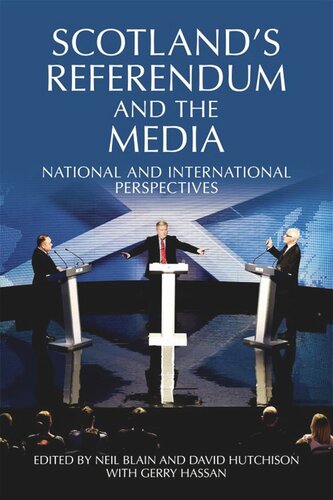

Most ebook files are in PDF format, so you can easily read them using various software such as Foxit Reader or directly on the Google Chrome browser.
Some ebook files are released by publishers in other formats such as .awz, .mobi, .epub, .fb2, etc. You may need to install specific software to read these formats on mobile/PC, such as Calibre.
Please read the tutorial at this link: https://ebookbell.com/faq
We offer FREE conversion to the popular formats you request; however, this may take some time. Therefore, right after payment, please email us, and we will try to provide the service as quickly as possible.
For some exceptional file formats or broken links (if any), please refrain from opening any disputes. Instead, email us first, and we will try to assist within a maximum of 6 hours.
EbookBell Team

4.7
86 reviewsRead an article by David Hutchison about the book on allmediascotland.com
After the Referendum on whether Scotland should become an independent country in September 2014 ¬‒ and following a momentous mobilisation of voters by both the Yes and No campaigns ‒ Scotland's political environment has been fundamentally energised. But how was the Referendum campaign reported and structured in the media in Scotland, the wider United Kingdom, and in other parts of the world, and when might ‘representation’ have turned into ‘construction’?
In this book scholars, commentators and journalists from Britain, Europe, Canada and Australia examine how the media across the world presented the debate itself and the shifting nature of Scottish ‒ and British ‒ identity which that debate revealed. Several of the contributors also explore how the emphases and interpretations placed on the Scottish debate by their national media illuminate attitudes to their own nationalism and separatism questions.
The consequences of the No majority vote are traced in the media through until the SNP landslide in the UK general election of 2015. The issues which have subsequently come to the fore will be relevant for years to come.